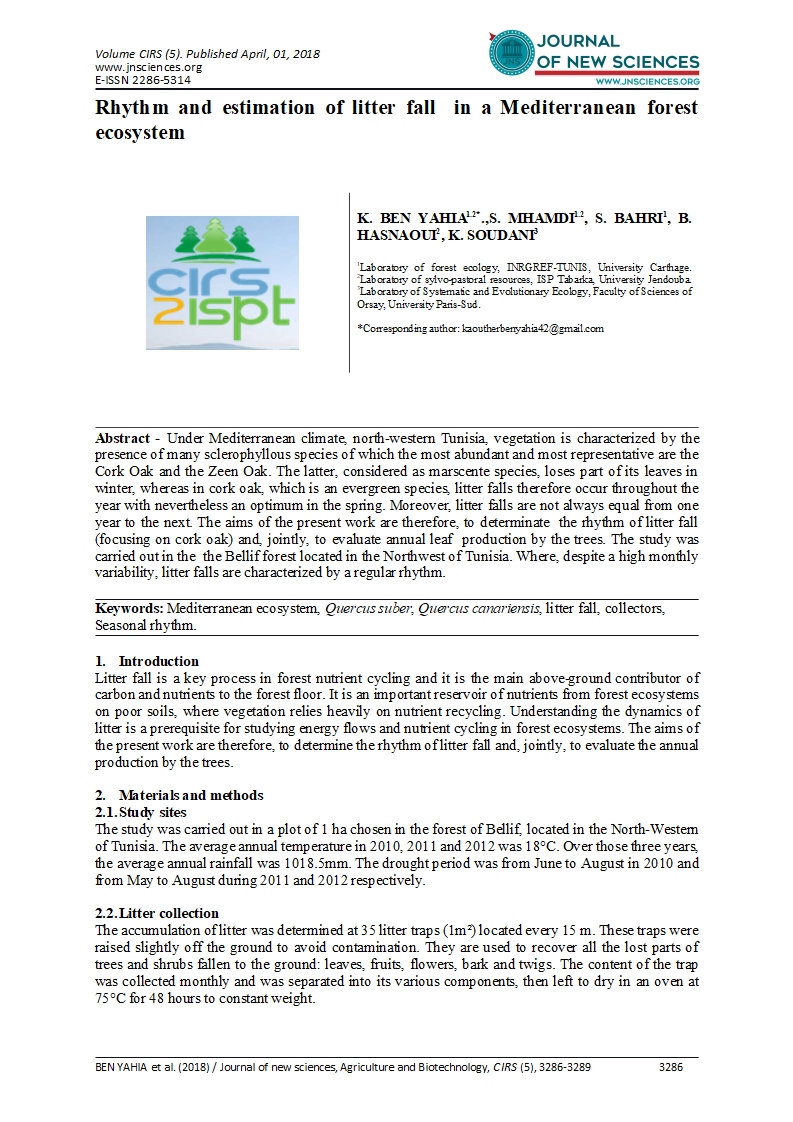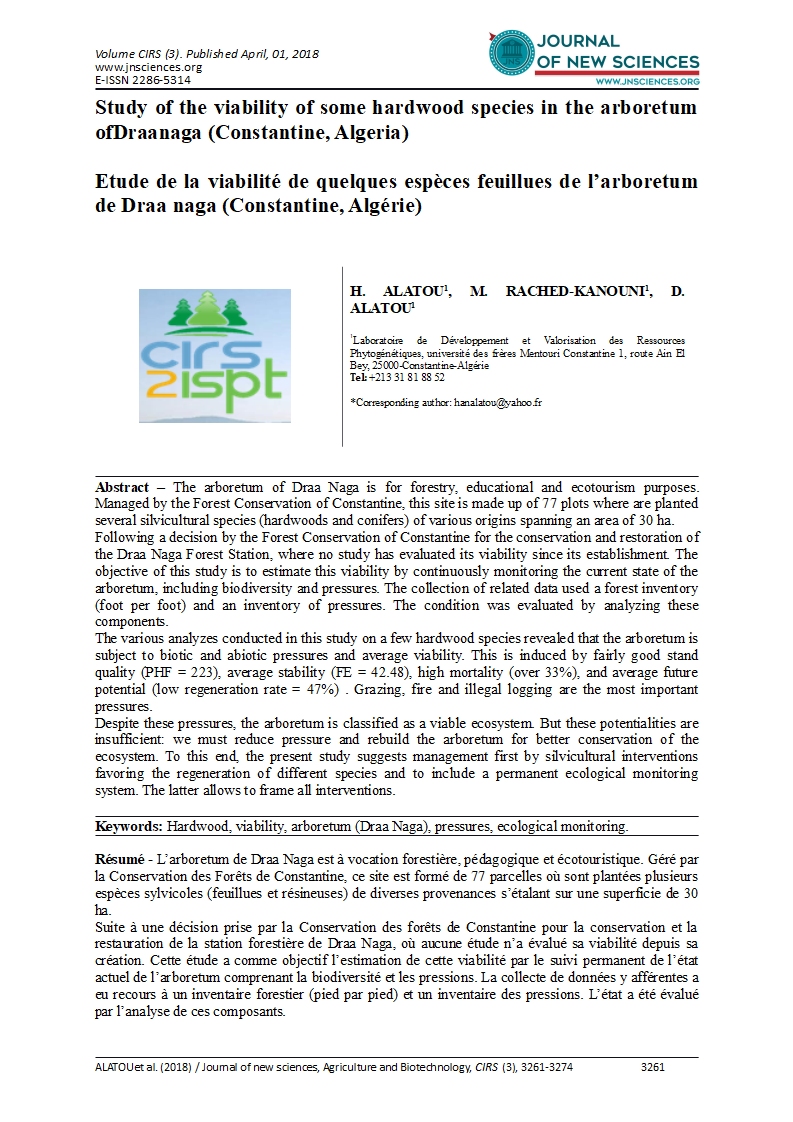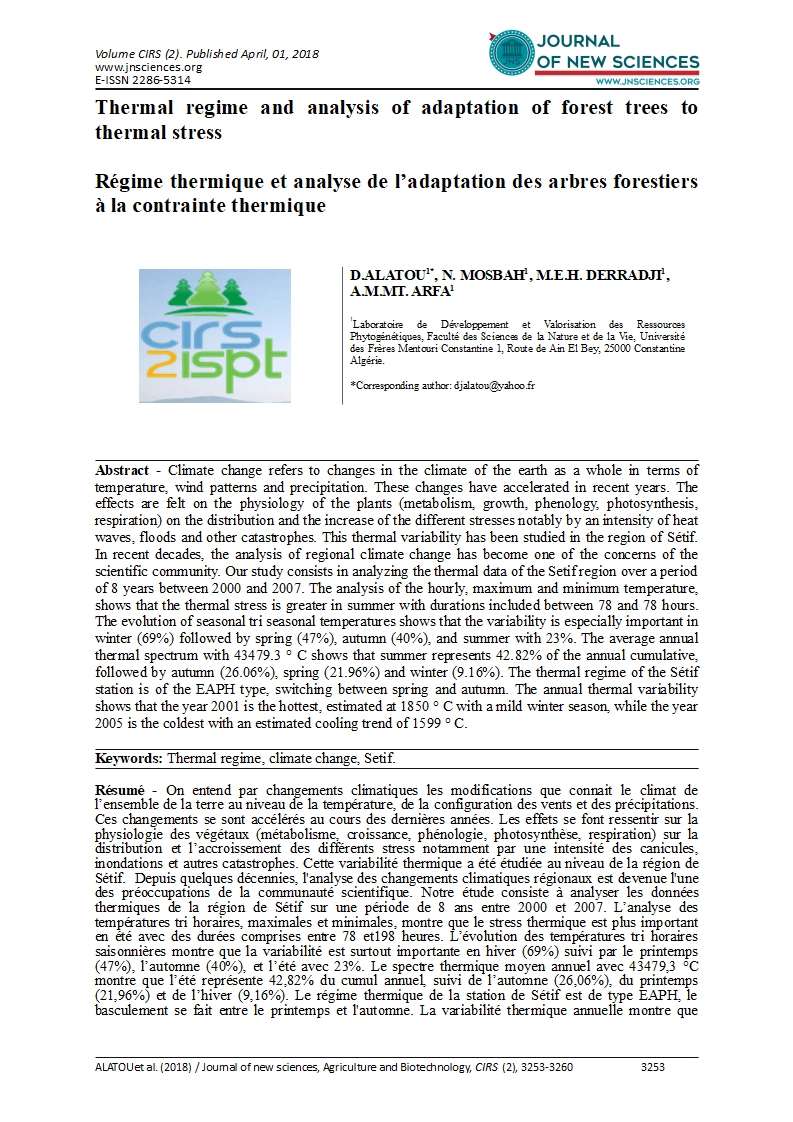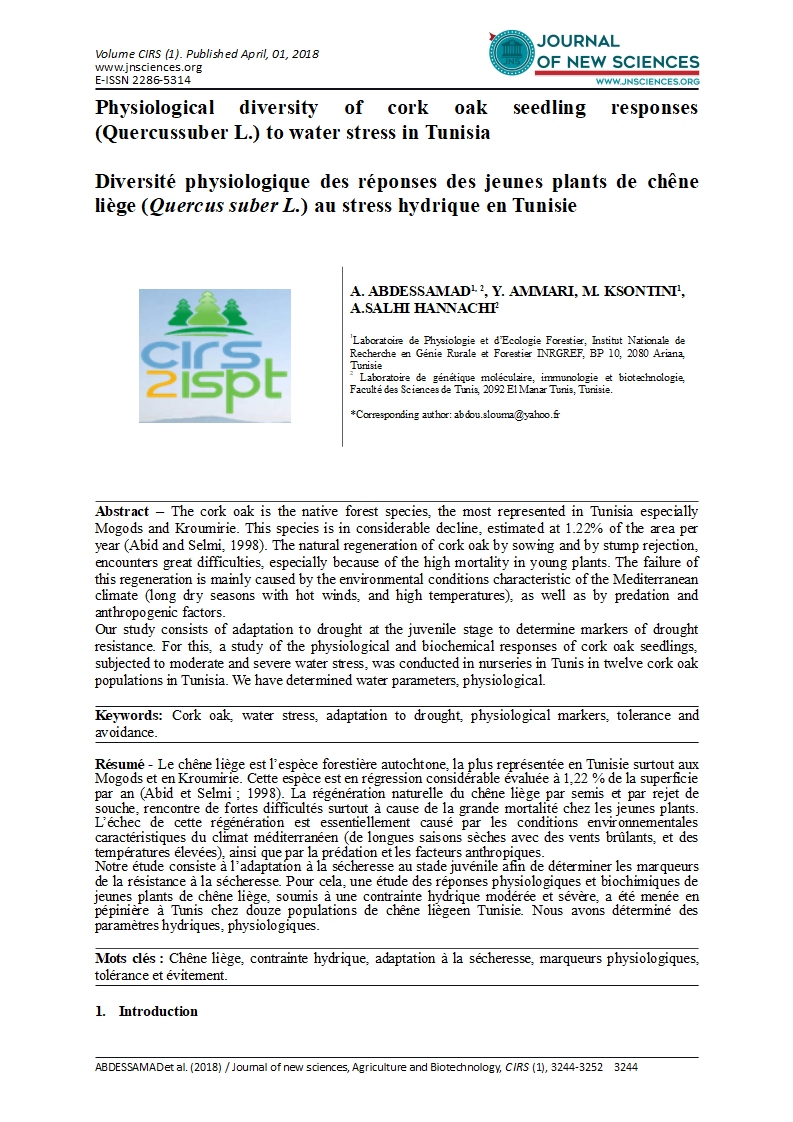- Category: VOLUME SPÉCIAL (CONFÉRENCE CIRS 2017)
- Hits: 9895
Rhythm and estimation of litter fall in a Mediterranean forest ecosystem

|
|
K. BEN YAHIA1.2* S. MHAMDI1.2 S. BAHRI1 B. HASNAOUI2 K. SOUDANI3
1Laboratory of forest ecology, INRGREF-TUNIS, University Carthage. 2Laboratory of sylvo-pastoral resources, ISP Tabarka, University Jendouba. 3Laboratory of Systematic and Evolutionary Ecology, Faculty of Sciences of Orsay, University Paris-Sud.
|
Abstract - Under Mediterranean climate, north-western Tunisia, vegetation is characterized by the presence of many sclerophyllous species of which the most abundant and most representative are the Cork Oak and the Zeen Oak. The latter, considered as marscente species, loses part of its leaves in winter, whereas in cork oak, which is an evergreen species, litter falls therefore occur throughout the year with nevertheless an optimum in the spring. Moreover, litter falls are not always equal from one year to the next. The aims of the present work are therefore, to determinate the rhythm of litter fall (focusing on cork oak) and, jointly, to evaluate annual leaf production by the trees. The study was carried out in the the Bellif forest located in the Northwest of Tunisia. Where, despite a high monthly variability, litter falls are characterized by a regular rhythm.
Keywords: Mediterranean ecosystem, Quercus suber, Quercus canariensis, litter fall, collectors, Seasonal rhythm.



